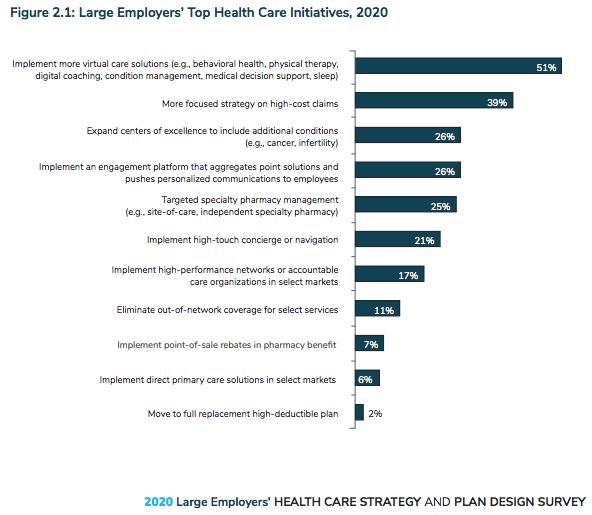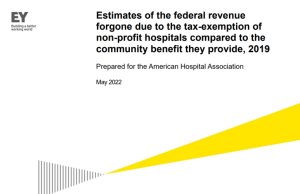With U.S. healthcare benefit costs projected to climb 5 percent during 2020, large employers are doubling down on efforts to stem the increases, according to results in an annual survey by the National Business Group on Health (NBGH) in Washington, D.C.
Employers identified implementing more virtual care solutions (51 percent) and a more focused strategy on high-cost claims (39 percent) as their top initiatives for 2020.
The survey results also showed that managing prescription drug benefit costs remains a high priority for employers in 2020.
The 2020 Large Employers’ Health Care Strategy and Plan Design Survey found employers project the total cost of health benefits will increase 5 percent during 2020, taking cost management initiatives into account. That increase is identical to 2019’s projected increase — but actual costs are coming in lower, according to NBGH data. Large employers reported the actual increase in 2018 was 3.6 percent.
Including premiums and out-of-pocket costs for employees and dependents, the total cost of healthcare is estimated to be $14,642 per employee for 2019 and projected to rise to an average of $15,375 in 2020. Employers will cover nearly 70 percent of costs while employees will bear about 30 percent, or nearly $4,500.
Some 44 percent of employers ranked musculoskeletal issues as the top condition impacting their costs while 85 percent ranked it among the top three conditions. One in four (25 percent) employers ranked cancer as the top condition.
“One of the challenges employers face in managing their healthcare costs is that healthcare is delivered locally and change is not scalable. It’s a market-by-market effort,” said Brian Marcotte, president and CEO of NBGH. “Employers are turning to market-specific solutions to drive meaningful changes in the healthcare delivery system.”
Employer interest in alternative payment and delivery models including accountable care organizations (ACOs) and high-performance networks (HPNs) remains strong. Nearly one-third (31 percent) plan to implement either or both strategies in select markets in 2020, either directly or through their health plan, and that percentage could nearly double to 60 percent by 2022.
Interestingly, 49 percent of respondents plan to pursue an advanced primary care strategy in 2020, and another 26 percent are considering one by 2022.
Employers continue to focus on broad-based solutions as they pursue local market opportunities. The number of employers who believe virtual care will play a significant role in how healthcare is delivered in the future continues to grow (64 percent for 2020 versus 52 percent for 2019). The majority of respondents (51 percent) will offer more virtual care programs next year.
Nearly all employers will offer telehealth services for minor, acute services while 82 percent will offer virtual mental health services, and that could grow to 95 percent by 2022. Virtual care for musculoskeletal management shows the greatest potential for growth. While 23 percent will offer musculoskeletal management virtual services next year, another 38 percent are considering it by 2022.
For more information, visit www.businessgrouphealth.org








